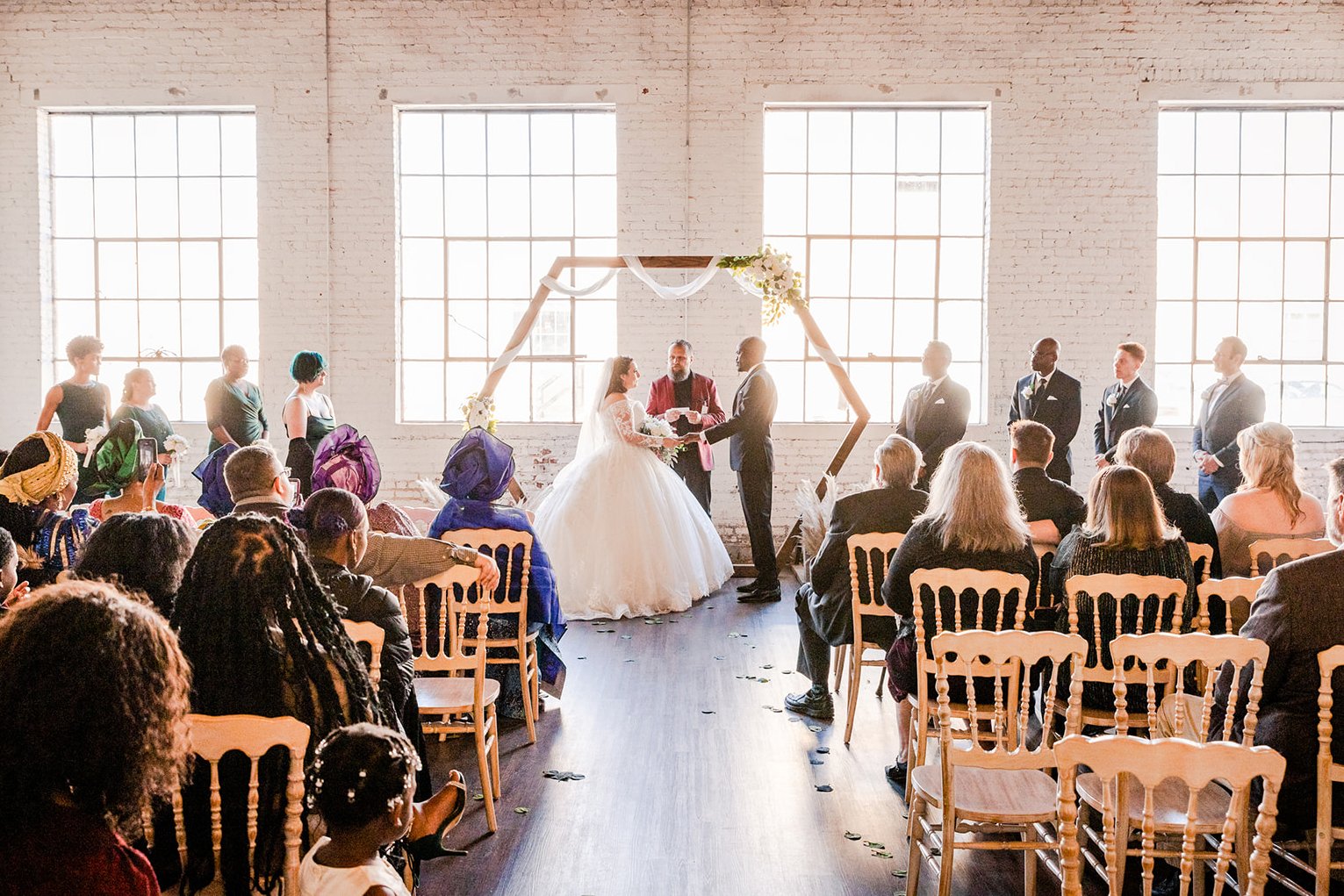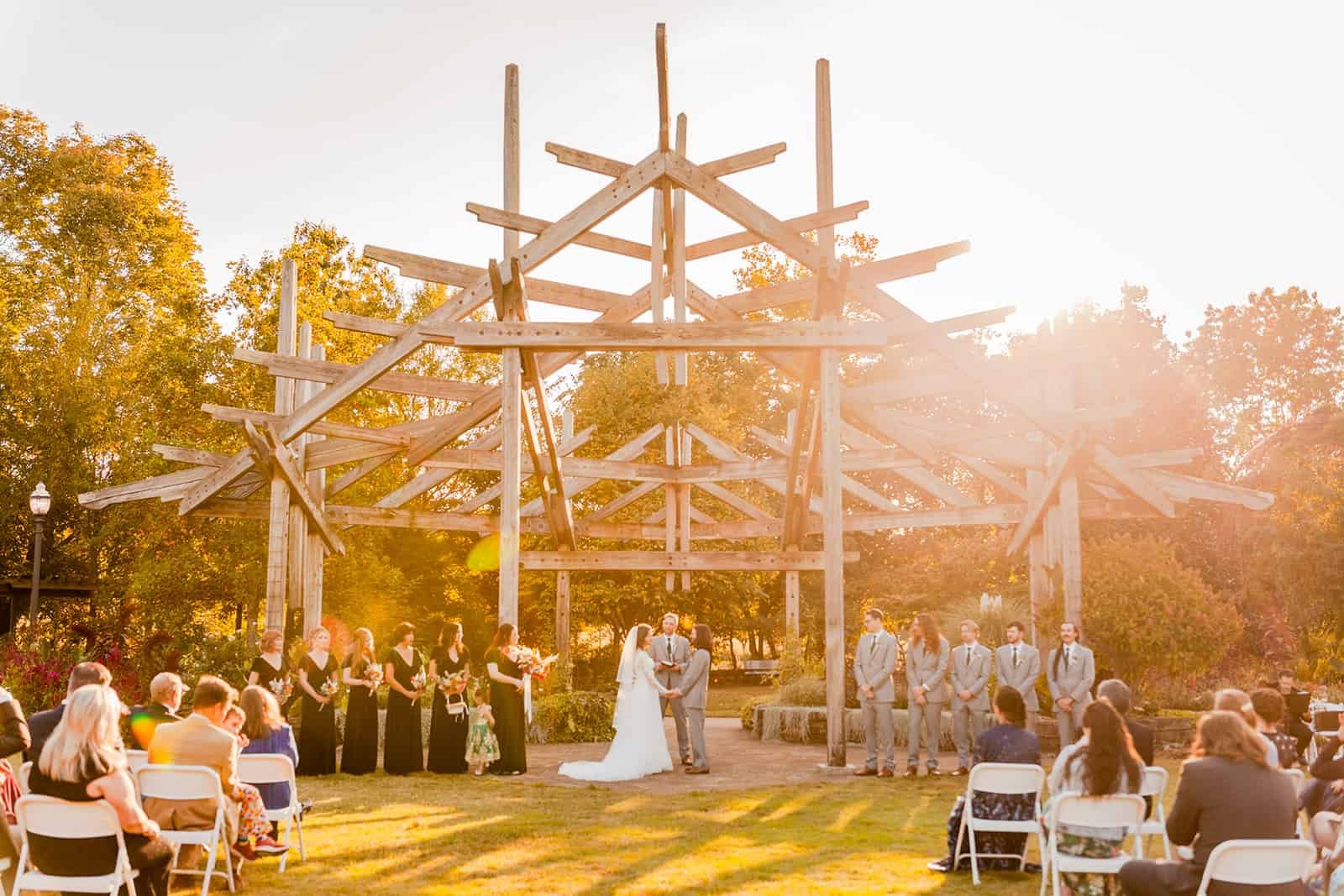Wedding Day Timeline | The Best Time For Your Ceremony
The Perfect Ceremony Start Times for all Seasons and Situations
Among the many details soon-to-be weds must consider, an often overlooked yet extremely important detail is this: what time of day should you get married? If you don’t have a strong opinion about your wedding day timeline, chances are, your photographer (secretly) does. If you’re excited to have the most stunning, vibrant wedding photos possible, we have exposed that secret for you!
Golden Hour
You might be familiar with the term “Golden Hour.” This is the sweet spot for photographers to get the best shots of their couples and families. Golden hour happens just after sunrise or just before sunset when the sun is lower in the sky. This sun position makes the surrounding light soft and warm, dare I say, golden! It’s simply the most flattering light to say “I do” in.
When to Start the Wedding Ceremony?
As a rule of thumb, the best time for an outdoor ceremony is generally two hours before sunset, however, there are some details to consider:
Outdoor ceremony area that is completely shaded? You can get away with saying “I Do” 2-3 hours before sunset
Open field ceremony with no possible shade? Say “I Do” 1 hour before sunset
Indoor ceremonies. Does this even apply? Yes! If you are having an indoor ceremony, you will likely still want to take outdoor portraits. If your venue is flooded with natural light, like a glass chapel — 2 hours before sunset is your best bet! This way, you’ll have plenty of time to reconvene outside after the ceremony and take beautiful family portraits.
Why having an outdoor ceremony around noon is a bad idea
There is one exception to an outdoor noon ceremony, and it’s a winter wedding! This is simply because of the angle of the sun in the sky during this time of year - it sits lower and gives a naturally diffused light. Days are short, shadows are long, and the light is cool, which makes for some unique photos
At any other time of year, remember, if you opt for a noon wedding in an unshaded area, you may risk:
unflattering shadows under the eyes
squinty faces
harsh lighting
really bright photos with dark shadows
Noon lighting can be the hardest light to photograph people in, especially on clear days. If you are going to opt for a ceremony around noon, it’s probably a good idea to pick a photographer with at least a few years of experience.
A sample timeline for wedding photography
Here is a timeline for wedding photos. This example is a 10-hour wedding package with a 5 pm ceremony and sunset around 7:15 pm. Most photographers should offer timeline help since so much revolves around photography on your wedding day. Wedding planners will also create timelines. Personally, I like to create a specific photo timeline that can then be incorporated into your full-day timeline.
1:00 PM Detail photos
1:45 PM Decor photos
2:00 PM Getting ready photos in the bridal suite
3:00 PM Getting ready photos in the groom’s room
3:30 PM First look with the couple
3:40 PM Wedding party portraits
4:00 PM Family photos with immediate family
4:20 PM Formal wedding portraits
4:40 PM Reset for the ceremony
5:00 PM Ceremony
5:30 PM Family photos with extended family
6:00 PM Cocktail hour covered by 2nd photographer
6:30 PM Grand entrance and dinner
7:00 PM Sneak out for sunset wedding portraits
7:30 PM First dance and other dances
7:45 PM Dance floor opens - candid photos
8:15 PM Cake cutting
9:15 PM Couple to sneak out for nighttime portraits
9:30 PM Open dance floor
10:45 PM Private last dance
10:55 PM Grand exit


